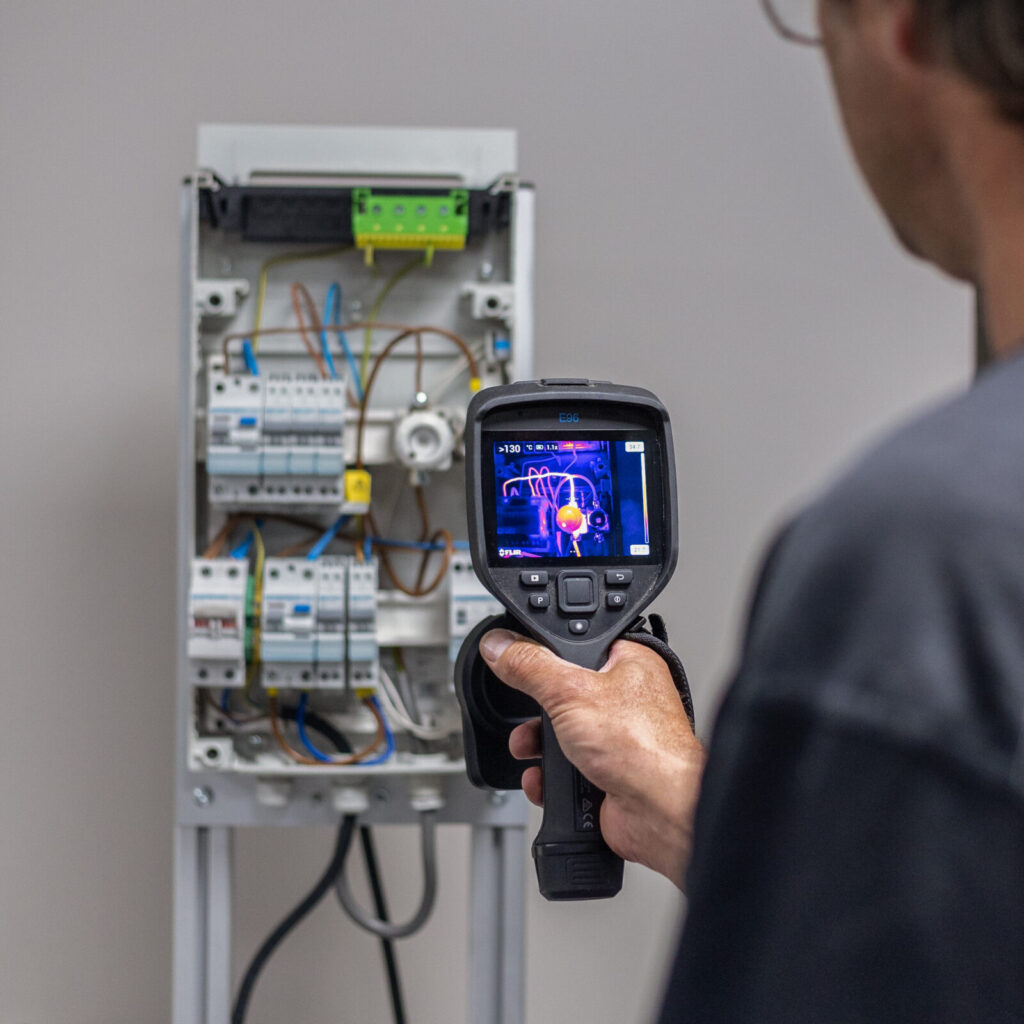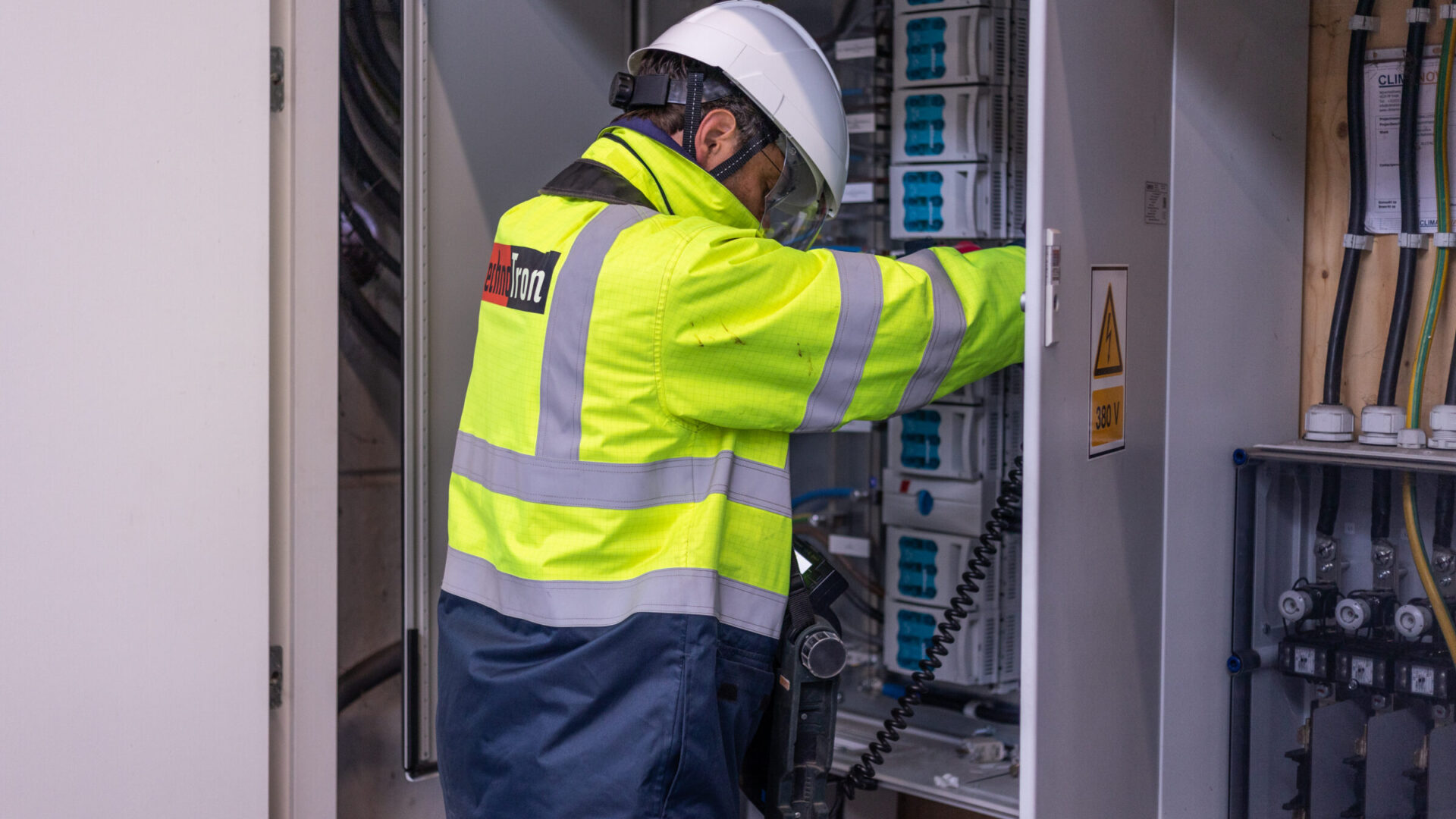What is a Scope 10 inspection?
The SCIOS Scope 10 certification focuses on assessing fire risks in electrical installations. It has a different goal than other inspection methods: this inspection helps prevent fire hazards and ensures compliance with insurance requirements. Scope 10 is ideal for companies that want extra assurance on fire safety. A SCIOS Scope 10 inspection alone does not meet the Dutch Working Conditions Act (Arbowet).
This inspection approach originated with insurers. The SCIOS Scope 10 scheme also requires, via the technical document, that a minimum inspection scope is defined in the inspection plan. It includes a thermographic survey in accordance with NPR 8040-1 (assessment of measured temperatures).
A SCIOS Scope 10 inspection focuses on:
- Ageing of installations
- Poor connections or overloading
- Fire hazards
- Correct operation of protective devices
- Thermal loading and hotspots
This inspection does not focus on user safety (as with SCIOS Scope 8), but specifically on preventing fires caused by electrical installations.
SCIOS Scope 10 inspection: what do we check?
During a SCIOS Scope 10 inspection, we check the installation for elements that can lead to heat build-up or fire. Our approach is thorough, independent, and certified.
The inspection includes, among other things:
- Visual inspection of distribution boards, terminals, switches, and cabling
- Thermographic inspection to detect hotspots
- Checks for overloading and component wear
- Assessment of the quality of connections and cable routes
- Verification of documentation and drawings
Afterwards, you receive an inspection report with risk classifications and practical recommendations.
Scope 10 inspection required? Technotron will arrange it
For many organisations, a Scope 10 inspection is mandatory under insurance terms or company risk policy. This often applies to:
- Companies with elevated fire risk (e.g., manufacturing, logistics, petrochemicals)
- Premises with an older electrical installation
- Organisations with high energy consumption
- Buildings with business‑critical installations
Without a valid certificate, you risk denied claims or liability in the event of an incident. Technotron helps prevent this with expert inspections and comprehensive reports.

When should you carry out a SCIOS Scope 10 inspection?
The frequency depends on operating conditions, the age of the installation, and insurer requirements. Under normal operations, plan an inspection every 3 to 5 years, or at the commissioning of a new installation or building. An inspection is also required after extensions or modifications to the electrical installation and when insurance terms change. Regular inspections prevent major damage and safeguard continuity.
Why choose Technotron?
- SCIOS‑certified inspectors
- Many years of industrial inspection experience
- High‑quality thermography and measurement equipment
- Fully independent and transparent
- Fast turnaround, clear communication, and tailored solutions
We advise on improvement measures and help resolve bottlenecks.
Schedule your SCIOS Scope 10 inspection with Technotron
In addition to our SCIOS Scope 8 and SCIOS Scope 10 services, we also support inspections and certifications according to NEN 1010 and NEN 3140. Each standard targets a different aspect of electrical installations.
Make sure your installation meets insurers’ requirements and that fire risks are identified in time. Technotron manages your SCIOS Scope 10 inspection from A to Z.

